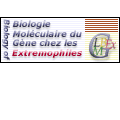
|
|















|
International Summer School
From Genome to Life:
Structural, Functional and Evolutionary approaches
DAYEM Manal |
|
Institut de Pharmacologie Moleculaire et Cellulaire, UMR 6079, CNRS, 660, Route Des Lucioles, Sophia-Antipolis, 06560 Valbonne, France title: Wound healing in lung inflammatory diseases Airway epithelial damage occurs in inflammatory diseases such as Asthma or Cystic Fibrosis. The rapid regeneration of a continuous epithelium is critical to maintain barrier function. During Cystic Fibrosis, massive infiltration of the airway epithelium by neutrophils is observed, and the consequent release of noxious compounds (free radicals, proteases,...) can destroy the surface epithelium. The complex process of wound healing involves several steps, including spreading of the cells at the edge of the wound, migration, and eventually proliferation of the surrounding cells. We used the cDNA microarray technology to profile wound healing during lung inflammatory diseases and identify new disease-related genes. The wound was performed using an helicoidal scarificator. To monitor differential gene expression a microarray containing ~2500 probes was built. This microarray was spotted with single-stranded PCR fragments of approximately 250 nucleotides in length, originating from human sequences. Because each fragment bore an identity of more than 80% with its murine ortholog, the same microarray was useable in human as well as in mouse, and more generally, in any mammalians. The initial list of genes was restricted to CFTR, related ion transport proteins, cytokines, growth factors, and metalloproteinases. It was then further extended using various criteria, and the design of ~6000 probes has been performed. We validated the „mammalian‰ characteristic of this array by hybridizing cDNA issued from human, murine and canine cells. We then compared the expression profile of wounded human and canine keratinocytes and fibroblasts, and the effects of different drugs on the wound healing. We then analyzed primary culture of airway epithelial cells, A549 cell lines, keratinocytes and fibroblasts primary cells. The results we obtained demonstrate that cDNA microarrays are a very useful tool in analyzing molecular mechanisms associated with lung inflammation. |